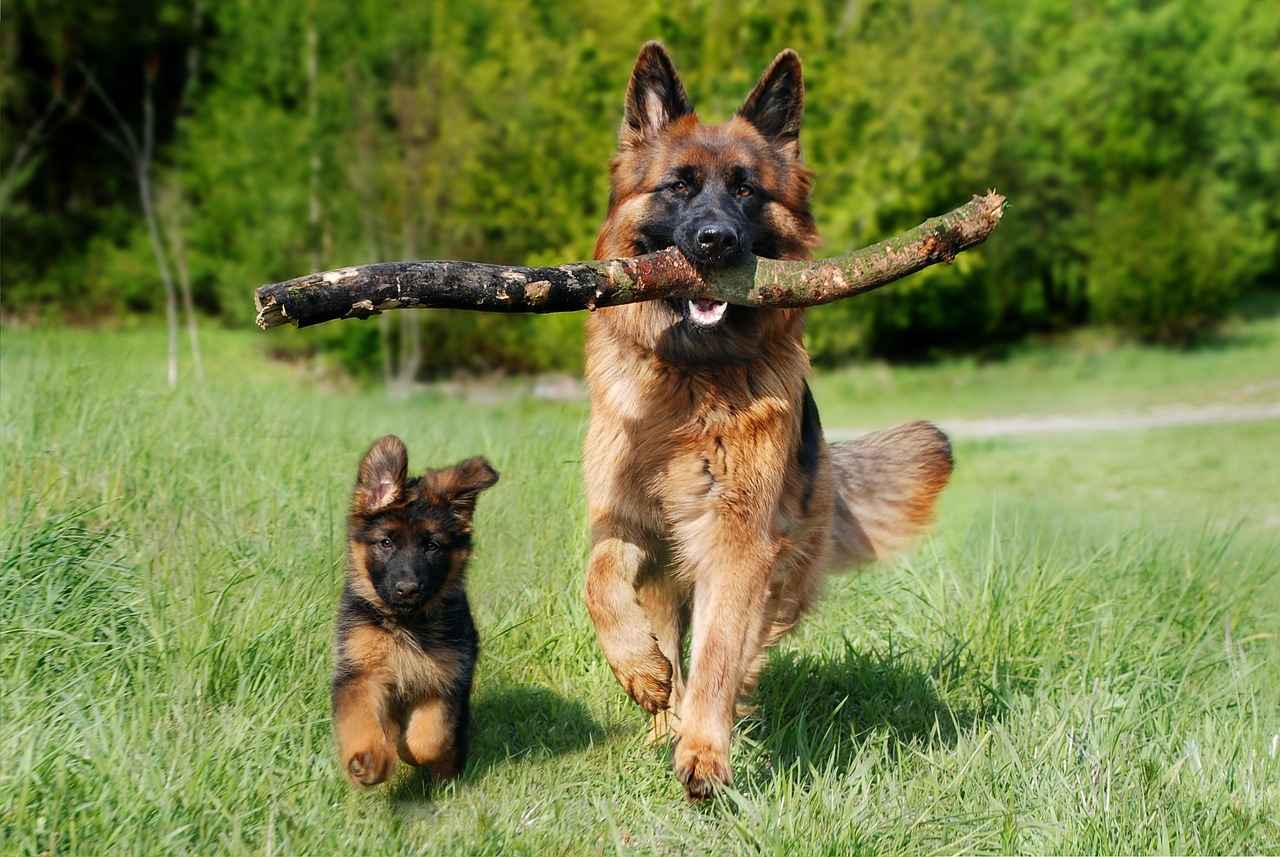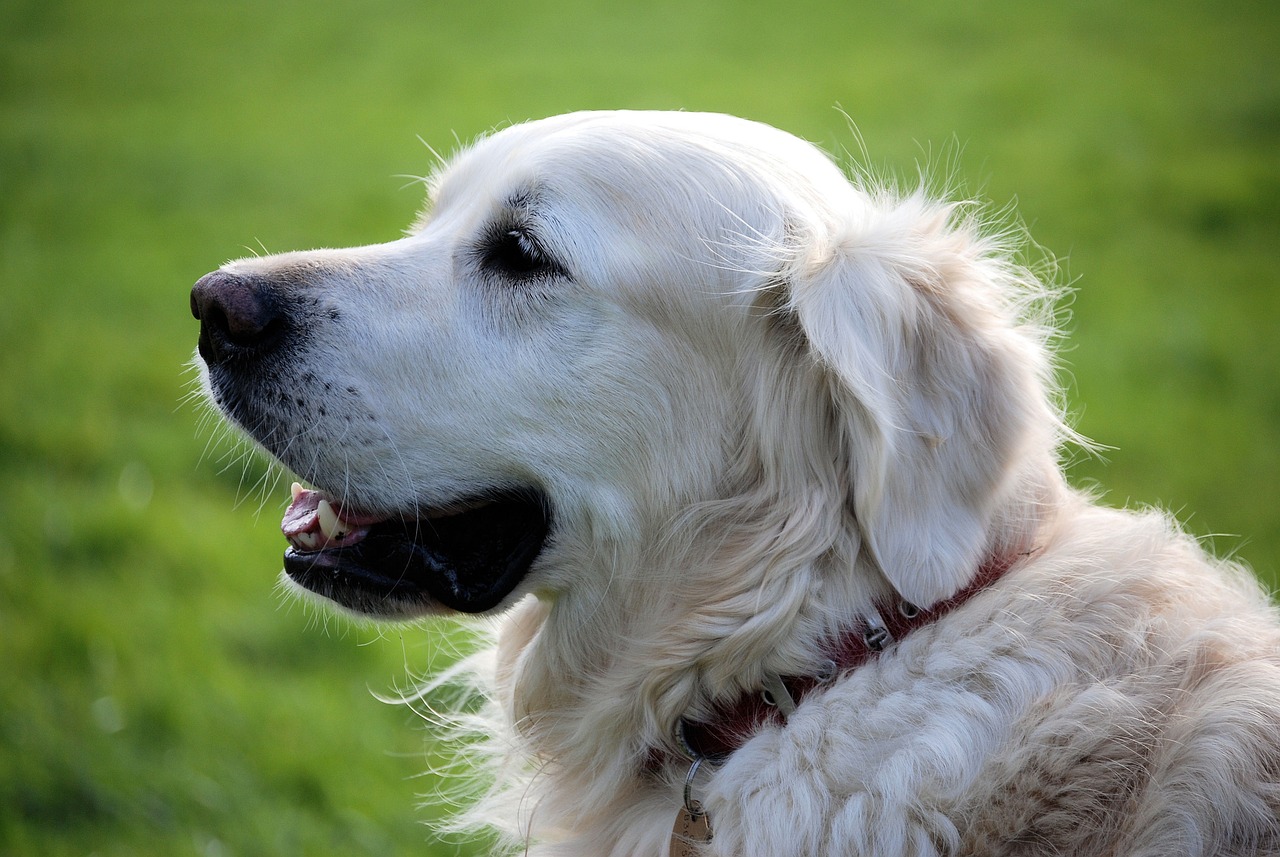This article delves into the intriguing relationship between a dog’s size and its bite force. Understanding this connection is essential for dog owners and enthusiasts alike, as it offers insights into canine behavior and strength. By exploring various factors that influence bite force, we can gain a better appreciation for the dynamics of our furry companions.
The Science of Bite Force
Bite force is a multifaceted concept that requires an understanding of a dog’s anatomy. Key components include the structure of the jaw, the arrangement of teeth, and the strength of the muscles involved in biting. These elements work together to determine how effectively a dog can exert force with its bite.
How Size Influences Bite Force
Generally, larger dogs tend to have stronger jaws and more substantial muscle mass, resulting in greater bite forces compared to smaller breeds. However, size is not the sole determinant of bite strength; other factors also come into play.
Comparative Analysis of Breeds
- Larger breeds, such as Rottweilers and Mastiffs, can exhibit bite forces exceeding 500 PSI, showcasing a clear correlation between size and strength.
- Conversely, smaller breeds like Chihuahuas may surprise many with their relatively strong bite forces, proving that size alone does not dictate biting capability.
Other Factors Affecting Bite Force
Several other factors influence a dog’s bite force, including age, health, and training. These aspects highlight the complexity of canine strength and the importance of considering more than just size.
The Role of Jaw Structure
The anatomical design of a dog’s jaw, including tooth shape and alignment, is crucial in determining how effectively a dog can apply bite force. Well-structured jaws contribute significantly to a dog’s biting efficiency.
Muscle Development and Bite Force
Well-developed jaw muscles enhance a dog’s ability to apply force. Therefore, muscle strength is a vital component in the overall equation of bite power.
Impact of Training on Bite Force
Training can play a significant role in enhancing a dog’s biting capabilities, especially in working breeds. Specific exercises are designed to strengthen jaw muscles and improve precision, leading to a more effective bite.
Practical Implications for Dog Owners
Understanding the factors that influence bite force can empower dog owners to make informed decisions regarding training, socialization, and safety measures. This knowledge ultimately fosters a better relationship with their pets.
Safety Considerations for Dog Owners
Being aware of a dog’s bite force can help owners manage their pets around children and other animals, ensuring safety and minimizing risks in various environments.
Choosing the Right Breed
By understanding the bite forces associated with different breeds, prospective dog owners can select a breed that aligns with their lifestyle, ensuring compatibility and safety at home.

The Science of Bite Force
is a fascinating area of study that delves into the intricate mechanics behind how dogs exert pressure with their jaws. To fully understand this concept, it is essential to analyze several anatomical and physiological components that contribute to a dog’s biting capability. The jaw structure, teeth configuration, and muscle strength all play significant roles in determining the overall power of a dog’s bite.
The anatomy of a dog’s jaw is designed for both strength and efficiency. Dogs possess a unique jaw structure that allows for a powerful grip, with their teeth adapted to their dietary needs, whether they are carnivorous, omnivorous, or herbivorous. This anatomical design is complemented by the robust muscles that surround the jaw, particularly the masseter muscle, which is crucial for biting force. The stronger and more developed these muscles are, the more force a dog can exert when biting.
In addition to muscle strength, the teeth structure also contributes to bite force. Canines, molars, and incisors are designed for different functions, from tearing to grinding. For instance, larger dogs often have larger teeth that can grip and puncture more effectively, enhancing their biting power. Conversely, smaller breeds may have less pronounced teeth, which can affect their bite force relative to their size.
Moreover, various factors such as age, health, and training can influence a dog’s bite force. Younger dogs may have more energy and stronger muscles, while older dogs might experience a decline in muscle mass and dental health, impacting their biting capability. Training can also play a pivotal role; dogs trained for specific tasks may develop stronger jaw muscles through targeted exercises.
In conclusion, understanding the science of bite force involves a comprehensive look at the anatomy and physiology of a dog’s jaw and teeth, alongside the influence of muscle strength and external factors. This knowledge can be invaluable for dog owners and enthusiasts alike, providing insights into the capabilities and care of their canine companions.

How Size Influences Bite Force
When examining the relationship between a dog’s size and its bite force, it becomes evident that while larger dogs often exhibit stronger jaws and greater muscle mass, size is not the sole determinant of bite strength. Understanding this complex interaction is essential for dog owners and enthusiasts alike.
Understanding Bite Force Mechanics
The mechanics of bite force are influenced by several factors, including:
- Jaw Anatomy: The structure and alignment of a dog’s jaw can significantly affect how much force it can exert.
- Muscle Strength: Larger dogs typically have more developed jaw muscles, which contributes to their ability to apply greater force.
- Teeth Structure: The shape and sharpness of a dog’s teeth can also play a role in how effectively they can bite.
Comparative Bite Force Across Breeds
Different breeds showcase a fascinating range of bite forces. For instance, breeds like the Rottweiler and American Bulldog can exert impressive bite forces, often exceeding 500 PSI. In contrast, smaller breeds, such as the Pomeranian, may have a bite force that, while less in absolute terms, is significant relative to their size.
Beyond Size: Additional Influencing Factors
Several other factors come into play when considering a dog’s bite force:
- Age: Younger dogs may not have fully developed jaw muscles, while older dogs might experience a decline in strength.
- Health: A dog’s overall health can impact muscle development and jaw strength.
- Training: Specific training regimens can enhance a dog’s biting capabilities, particularly in working breeds.
Conclusion
In conclusion, while larger dogs generally possess stronger bite forces due to their size, other factors such as jaw structure, muscle development, and training play significant roles in determining a dog’s overall biting capability. Understanding these dynamics can help dog owners make informed decisions regarding training and safety measures.
Comparative Analysis of Breeds
When examining the bite force among different dog breeds, it becomes evident that there is a vast diversity in strength and capability. This variation is primarily influenced by the dog’s genetic background, intended purpose, and unique physical traits. Understanding these factors can provide valuable insights for dog owners, trainers, and enthusiasts alike.
| Breed | Bite Force (PSI) | Characteristics |
|---|---|---|
| Rottweiler | 328 | Powerful, loyal, and protective; often used in police and guard work. |
| Mastiff | 556 | Large and muscular; known for their gentle temperament but strong protective instincts. |
| German Shepherd | 238 | Intelligent and versatile; commonly used in various working roles, including search and rescue. |
| Chihuahua | 100 | Small but fierce; known for their bold personalities despite their size. |
While larger breeds like the Rottweiler and Mastiff exhibit impressive bite forces, smaller breeds, such as the Chihuahua, can deliver surprising strength relative to their size. This phenomenon underscores the notion that size alone does not dictate a dog’s biting capability. Instead, a combination of muscle development, jaw structure, and even the dog’s training and socialization play critical roles in determining bite force.
Moreover, the purpose for which a breed was developed significantly impacts its bite strength. Breeds engineered for protection or hunting often possess stronger jaws and greater muscle mass compared to those bred primarily for companionship. This comparative analysis not only highlights the remarkable diversity among breeds but also emphasizes the importance of understanding these traits for responsible ownership.
In conclusion, the comparative analysis of dog breeds reveals that while size and breed type influence bite force, other factors such as training, health, and genetics also contribute to a dog’s overall biting capabilities. By recognizing these elements, dog owners can make informed decisions regarding their pets, ensuring safety and compatibility within their homes.
Large Breeds and Their Bite Force
When it comes to understanding the bite force of large dog breeds, two notable examples are the Rottweiler and the Mastiff. These breeds are not only known for their impressive size but also for their remarkable bite forces, which can often exceed 500 PSI. This significant power is a direct result of their anatomical structure and muscular development.
The bite force of a dog is a crucial aspect of its physical capabilities. It is influenced by several factors, including jaw structure, muscle mass, and overall size. Larger breeds tend to have more robust jaws and denser muscles, allowing them to exert greater pressure when biting. For instance, the Rottweiler, known for its strength and loyalty, has a bite force that ranks among the highest in the canine world. Similarly, the Mastiff, with its massive frame, is also capable of delivering a powerful bite.
To put this into perspective, a bite force of over 500 PSI means these dogs can exert substantial pressure, which is often more than enough to cause serious damage if provoked. This characteristic has historically made them suitable for protection and guarding roles. However, it is essential to note that while size contributes to bite force, it is not the sole determinant. Factors such as training, socialization, and temperament also play significant roles in how these dogs interact with humans and other animals.
Moreover, understanding the bite force of large breeds is critical for dog owners and enthusiasts. It helps in making informed decisions regarding training and safety measures. Owners of breeds like the Rottweiler and Mastiff must be aware of their dog’s capabilities and manage their interactions with children and other pets accordingly.
In conclusion, large breeds like the Rottweiler and Mastiff exemplify how size and strength correlate to bite force. Their impressive capabilities underscore the importance of responsible ownership and training to ensure these powerful dogs are well-integrated into family life.
Small Breeds and Their Bite Force
When it comes to canine strength, many people often assume that larger breeds possess the most formidable bite forces. However, small breeds, such as Chihuahuas, challenge this notion by demonstrating that size is not the sole determinant of biting capability. In fact, these diminutive dogs can exert a surprisingly powerful bite relative to their body size.
Research indicates that the bite force of a dog is not just a matter of size; it is influenced by several factors including jaw structure, muscle development, and even the breed’s specific purpose. For example, Chihuahuas, despite their small stature, have a bite force that can reach up to 100 PSI (pounds per square inch). This is quite impressive when considering their weight, which typically ranges from 2 to 6 pounds.
| Breed | Bite Force (PSI) | Weight Range (lbs) |
|---|---|---|
| Chihuahua | 100 | 2-6 |
| Pomeranian | 90 | 3-7 |
| Yorkshire Terrier | 120 | 4-7 |
Moreover, the behavioral traits of small breeds also play a role in their biting capability. Many small dogs are known for their bold personalities, often exhibiting protective behaviors that can lead to a stronger bite when they feel threatened. This instinctual response is crucial for their survival, despite their size.
In conclusion, while it is easy to assume that larger dogs have the upper hand in terms of bite force, small breeds like Chihuahuas remind us that strength can come in compact packages. Understanding this aspect of small breeds can help dog owners appreciate their pets’ unique capabilities and foster better relationships with them.
Other Factors Affecting Bite Force
When discussing a dog’s bite force, it is essential to recognize that size is just one piece of a much larger puzzle. Several other factors come into play that can significantly alter a dog’s biting capability. Understanding these elements can provide deeper insights into canine behavior and strength.
- Age: A dog’s age can greatly influence its bite force. Puppies typically have weaker bites as their jaws and muscles are still developing. Conversely, adult dogs usually exhibit stronger bite forces due to fully developed muscles and jaw structure. However, as dogs age, their bite force may decline due to health issues or muscle deterioration.
- Health: The overall health of a dog plays a crucial role in its physical capabilities. Dogs suffering from dental problems, joint issues, or other health conditions may experience a reduction in bite force. Maintaining good health through regular veterinary check-ups and proper nutrition is vital for preserving a dog’s strength.
- Training: A well-trained dog can exhibit enhanced bite force. Training programs that focus on muscle development and jaw strength can significantly improve a dog’s biting capabilities. For example, working breeds often undergo specialized training to enhance their natural strengths, resulting in a more powerful bite.
- Temperament: A dog’s temperament can also affect its willingness to bite. Fearful or anxious dogs may exhibit weaker bites due to hesitation, while confident dogs might show more strength. Understanding a dog’s behavior and emotional state is crucial in evaluating its bite potential.
In conclusion, while size is an important factor in determining a dog’s bite force, it is essential to consider age, health, training, and temperament. Each of these elements contributes to the complexity of canine strength, providing a comprehensive view of a dog’s biting capabilities.

The Role of Jaw Structure
is a critical aspect when discussing a dog’s ability to exert bite force. The anatomy of a dog’s jaw, including the shape and alignment of teeth, significantly influences how effectively a dog can apply pressure with its bite. Understanding this anatomical structure helps dog owners appreciate the physical capabilities of their pets and informs training and safety practices.
The jaw of a dog is composed of several key components that work together to create a powerful bite. These include:
- Mandible: The lower jaw, which is typically larger and more robust in breeds known for their strong bite.
- Maxilla: The upper jaw, which holds the upper teeth and plays a vital role in the alignment of the bite.
- Teeth Structure: The shape, size, and alignment of teeth can affect how force is distributed during a bite. For instance, canines are designed for tearing, while molars are suited for grinding.
Moreover, the muscle attachment points around the jaw contribute significantly to bite force. Dogs with well-developed muscles around their jaws can exert greater pressure, enhancing their biting capabilities. This is particularly evident in breeds that have been selectively bred for strength and working ability, such as Rottweilers and Mastiffs.
Additionally, the angle of the jaw can affect the efficiency of a dog’s bite. A more pronounced angle allows for a stronger grip, which is essential for hunting and protection breeds. This anatomical advantage is often seen in larger breeds, where the jaw structure is designed to accommodate more significant muscle mass and leverage.
In conclusion, the anatomical structure of a dog’s jaw is a vital factor in determining its bite force. By understanding these elements, dog owners can better appreciate their pets’ physical capabilities and make informed decisions regarding training and safety.
Muscle Development and Bite Force
are intricately linked, as the strength of a dog’s jaw muscles significantly impacts its ability to exert force during a bite. A dog’s bite power is not solely determined by its size; rather, it also depends on the development and conditioning of its jaw muscles. This relationship is essential for understanding how various breeds exhibit different levels of bite strength.
The anatomy of a dog’s jaw plays a critical role in its biting capabilities. Dogs possess powerful muscles, such as the masseter and temporalis, which are responsible for closing the jaw with great force. These muscles can be further developed through training and exercise, leading to an increase in bite power. For instance, working breeds are often trained to enhance their jaw strength, allowing them to perform tasks that require a strong bite, such as protection work or search and rescue.
In addition to training, the age and health of a dog can influence muscle development. Young dogs are typically more adaptable, allowing them to build muscle more efficiently through consistent training. Conversely, older dogs may experience muscle atrophy, which can diminish their bite force. Furthermore, a dog’s overall health, including nutrition and fitness levels, plays a vital role in maintaining strong jaw muscles.
Moreover, different breeds have varying natural predispositions regarding their muscle structure and strength. For example, breeds like the American Pit Bull Terrier and Rottweiler are known for their powerful jaws and well-developed muscles, contributing to their impressive bite forces. In contrast, smaller breeds may have less muscle mass but can still demonstrate surprising bite strength relative to their size.
In conclusion, muscle development is a crucial factor in determining a dog’s bite force. Through targeted training, proper nutrition, and an understanding of breed-specific characteristics, dog owners can enhance their pets’ biting capabilities while ensuring their health and well-being. This knowledge is essential for fostering a safe and responsible relationship between dogs and their owners.
Impact of Training on Bite Force
Training plays a crucial role in enhancing a dog’s biting capabilities, especially among working breeds. Through targeted exercises, owners can significantly strengthen their dog’s jaw muscles and improve the precision of their bite. This aspect of training is not only vital for working dogs, such as police or protection dogs, but it can also be beneficial for any breed.
Understanding the Importance of Training
Training is essential in developing a dog’s natural abilities. By engaging in specific exercises, dogs can improve their muscle strength and coordination. For instance, activities like tug-of-war can effectively build jaw strength while also providing mental stimulation. Additionally, proper training can help dogs learn to control their bite, which is crucial for safety during play and interaction with humans and other animals.
Types of Training Exercises
- Tug Exercises: These involve the dog pulling on a toy or rope, which helps strengthen jaw muscles.
- Fetch with Resistance: Using a weighted ball can increase the effort needed to grip and carry, further enhancing muscle development.
- Bite Work Training: This specialized training focuses on controlled biting techniques, often used in protection and sport dog training.
Benefits Beyond Bite Strength
While the primary goal of training may be to enhance bite force, there are additional benefits. Training fosters a closer bond between the dog and its owner, promotes discipline, and can reduce behavioral issues. A well-trained dog is often more confident and better able to navigate various environments.
Conclusion
In conclusion, training is an indispensable factor in maximizing a dog’s biting capabilities. By implementing structured training exercises, owners can not only enhance their dog’s physical abilities but also improve behavioral aspects, leading to a well-rounded and safe companion.

Practical Implications for Dog Owners
Understanding a dog’s bite force and the factors that influence it is crucial for dog owners. This knowledge not only helps in training and socialization but also plays a significant role in ensuring the safety of both the dog and those around it. By being informed, dog owners can make better decisions that enhance their relationship with their pets.
- Training Considerations: Knowledge of bite force can guide training approaches. For instance, strong breeds may require specialized training techniques to ensure they are well-behaved and responsive to commands.
- Socialization: Proper socialization is essential for all dogs, especially those with higher bite forces. Owners should expose their dogs to various environments, people, and other animals to promote positive interactions.
- Safety Measures: Understanding a dog’s bite strength helps in implementing safety measures. For example, owners of larger breeds may need to be more vigilant in public spaces to prevent accidents.
- Behavioral Insights: A dog’s bite force can reflect its temperament. Dogs with a stronger bite may exhibit more protective behaviors, so owners should be aware of their dog’s nature to manage its behavior effectively.
- Choosing the Right Breed: Prospective dog owners should consider a breed’s bite force in relation to their lifestyle. Selecting a breed that aligns with one’s living situation and activity level can prevent future challenges.
By taking these factors into account, dog owners can foster a more harmonious relationship with their pets. Ultimately, a well-informed owner is better equipped to ensure their dog is a safe and happy member of the family.
Safety Considerations for Dog Owners
Understanding a dog’s bite force is crucial for ensuring safety in households, especially those with children or other pets. A dog’s bite force can vary significantly based on factors like breed, size, and training. This awareness can help owners manage their pets effectively and minimize potential risks.
Why Bite Force Matters
The bite force of a dog is measured in pounds per square inch (PSI) and can range widely across different breeds. For instance, large breeds such as Rottweilers and German Shepherds can exert a bite force exceeding 300 PSI, while smaller breeds may have a bite force of around 100 PSI. Understanding these differences is essential for dog owners to ensure safe interactions.
Managing Interactions with Children
- Teach children how to approach and interact with dogs gently.
- Supervise all interactions between dogs and young children.
- Educate children about canine body language to recognize when a dog feels threatened or uncomfortable.
Socialization with Other Animals
Proper socialization is vital for dogs to learn how to interact with other animals safely. Owners should:
- Introduce their dogs to various environments and other animals gradually.
- Monitor playtime to ensure it remains friendly and non-aggressive.
- Provide training to reinforce positive behaviors and discourage any aggressive tendencies.
Conclusion
By being aware of a dog’s bite force and understanding how to manage their behavior, owners can create a safer environment for everyone involved. This knowledge not only aids in preventing accidents but also fosters a strong bond between the dog and its family members.
Choosing the Right Breed
is a critical decision for anyone considering bringing a dog into their home. Understanding the bite force of different breeds can play a significant role in this choice. It ensures that the selected breed aligns with the owner’s lifestyle, promoting both compatibility and safety within the home environment.
When evaluating potential dog breeds, it’s essential to consider several factors related to bite force:
- Size and Strength: Generally, larger breeds such as Rottweilers and German Shepherds possess greater bite forces due to their muscular build and jaw structure. In contrast, smaller breeds like Chihuahuas may have surprisingly strong bites relative to their size, but their overall power is significantly lower.
- Temperament: A dog’s temperament can influence how they use their bite. Breeds known for their gentle nature, such as Golden Retrievers, may not pose a risk despite having a strong bite force.
- Training and Socialization: Proper training can mitigate aggressive behaviors and enhance a dog’s ability to interact safely with people and other animals. Understanding a breed’s typical behavior can help in selecting a dog that fits well into a family.
- Health Considerations: A dog’s health can affect its bite force. Dental issues or jaw problems can reduce a dog’s ability to exert force, making health history an important factor in breed selection.
Ultimately, prospective dog owners should carefully assess their lifestyle and the specific needs of a breed. For instance, families with young children may benefit from breeds known for their gentle nature and lower bite forces, while active individuals might prefer breeds with higher energy levels and strength.
In conclusion, understanding the bite force of various breeds not only aids in selecting a compatible dog but also promotes a safer environment for both the dog and its human companions. By considering size, temperament, training, and health, potential owners can make informed decisions that lead to harmonious relationships with their pets.
Frequently Asked Questions
- Does a dog’s size really affect its bite force?
Absolutely! Generally, larger dogs have stronger jaws and more muscle mass, which translates to a higher bite force. However, it’s not just about size; factors like breed and jaw structure also play significant roles.
- Which dog breeds have the strongest bite force?
Breeds like the Rottweiler and Mastiff are known for their impressive bite forces, often exceeding 500 PSI. But don’t underestimate smaller breeds; some, like Chihuahuas, can surprise you with their relative strength!
- Can training improve a dog’s bite force?
Yes, training can definitely enhance a dog’s biting capabilities! Working breeds often undergo specific exercises that strengthen their jaw muscles and improve their precision, making them more effective in their tasks.
- What other factors influence a dog’s bite force?
Besides size, a dog’s age, health, and even its training history can significantly impact its bite force. It’s a complex interplay that goes beyond just muscular strength.
- How can understanding bite force help dog owners?
Knowing about a dog’s bite force can guide owners in making informed decisions regarding training and safety. It helps in managing interactions with children and other pets, fostering a safer environment for everyone.












